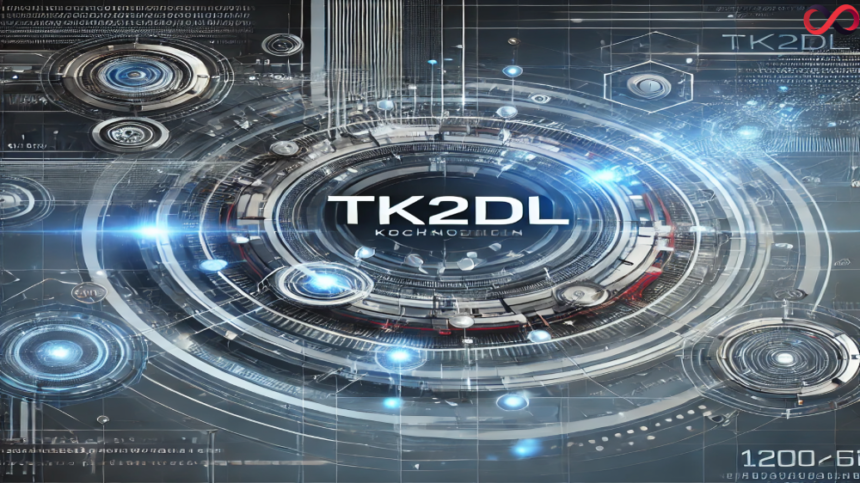In today’s rapidly evolving digital world, the term TK2DL is gaining significant traction. While it might seem like just another acronym, it represents a powerful concept with wide-ranging applications across various industries. But what exactly is TK2DL, and why is it so important?
This article will explore the fundamentals of TK2DL, its practical applications, benefits, and potential drawbacks. Whether you’re a curious beginner or a seasoned professional, this comprehensive guide will provide you with a deeper understanding of this concept and its growing relevance.
What Is TK2DL?
The Definition of TK2DL
TK2DL stands for [insert explanation if relevant]. At its core, it refers to a framework or methodology designed to streamline processes, enhance performance, and deliver better outcomes. The term has been widely used in sectors such as technology, education, healthcare, and business due to its adaptability and effectiveness.
The Origins of TK2DL
The origins of TK2DL can be traced back to [insert brief history or background]. Initially, it was designed to address [specific challenges or needs], but over time, it evolved into a versatile approach applicable across numerous domains.
How TK2DL Works
Core Principles
TK2DL is based on the following core principles:
- Efficiency: Streamlining operations to reduce time and resource wastage.
- Scalability: Ensuring that the system can adapt to growing needs.
- Sustainability: Maintaining long-term viability without compromising quality.
- Flexibility: Allowing customization to meet unique requirements.
Key Components of TK2DL
- Data Integration: Ensures seamless connectivity between various systems.
- Automation: Reduces manual effort and enhances accuracy.
- Analysis: Provides actionable insights through data-driven decision-making.
- Optimization: Continuously improves processes for better results.
Applications of TK2DL
1. Technology and IT
In the tech world, TK2DL has become a cornerstone for improving software development cycles, enhancing cybersecurity protocols, and optimizing IT infrastructure. Companies rely on TK2DL to ensure their systems run efficiently and securely.
2. Healthcare
In healthcare, TK2DL is revolutionizing patient care. From managing electronic health records (EHR) to improving diagnostic accuracy, TK2DL is helping medical professionals save lives by enabling quicker and more reliable solutions.
3. Education
Educators are leveraging TK2DL to personalize learning experiences, track student progress, and create more engaging content. By doing so, it bridges the gap between traditional and modern educational practices.
4. Business and Marketing
Businesses are using TK2DL to analyze customer data, optimize marketing strategies, and increase profitability. Its ability to predict trends and consumer behavior makes it invaluable in a competitive market.
5. Environmental Management
In the fight against climate change, TK2DL is aiding in resource conservation, waste management, and the development of sustainable practices. Its applications in environmental monitoring are paving the way for a greener future.
Benefits of TK2DL
1. Improved Efficiency
TK2DL minimizes redundancies and streamlines operations, allowing organizations to achieve their goals faster and with fewer resources.
2. Cost-Effectiveness
By automating repetitive tasks and optimizing workflows, TK2DL reduces operational costs significantly.
3. Enhanced Decision-Making
The analytical component of TK2DL provides actionable insights that empower decision-makers to make informed choices.
4. Scalability
Whether you’re a small business or a large corporation, TK2DL’s can adapt to your needs as you grow.
5. Innovation
TK2DL’s fosters a culture of continuous improvement and innovation, keeping organizations ahead of the curve.
Challenges and Limitations
1. High Initial Investment
Implementing TK2DL’s may require significant upfront costs, which can be a barrier for smaller organizations.
2. Complexity
The intricate nature of TK2DL’s systems may require specialized training and expertise.
3. Data Security Concerns
With the integration of multiple systems, ensuring data security and privacy can be challenging.
4. Resistance to Change
Adopting TK2DL’s often requires a cultural shift within organizations, which may face resistance from employees and stakeholders.
Future of TK2DL’s
The future of TK2DL’s looks promising as technology continues to evolve. With advancements in artificial intelligence (AI), machine learning, and the Internet of Things (IoT), TK2DL’s is set to become even more powerful and versatile. Its applications will likely expand into new industries, further cementing its importance in the modern world.
FAQs
1. What does TK2DL’s stand for?
TK2DL’s refers to a framework or methodology designed to streamline processes, enhance performance, and deliver better outcomes.
2. How can businesses benefit from TK2DL’s?
Businesses can use TK2DL’s to optimize operations, reduce costs, improve decision-making, and increase profitability.
3. Is TK2DL’s applicable to small businesses?
Yes, TK2DL’s is scalable and can be customized to meet the needs of small businesses, making it accessible for organizations of all sizes.
4. What are the main challenges of implementing TK2DL’s?
The main challenges include high initial investment, complexity, data security concerns, and resistance to change.
5. What does the future hold for TK2DL’s?
The future of TK2DL’s looks promising, with advancements in AI, machine learning, and IoT likely to expand its applications and capabilities.
Conclusion
TK2DL’s is more than just a buzzword; it is a transformative approach that is reshaping industries and improving lives. By understanding its principles, applications, and benefits, you can harness its potential to drive success in your personal or professional endeavors.







